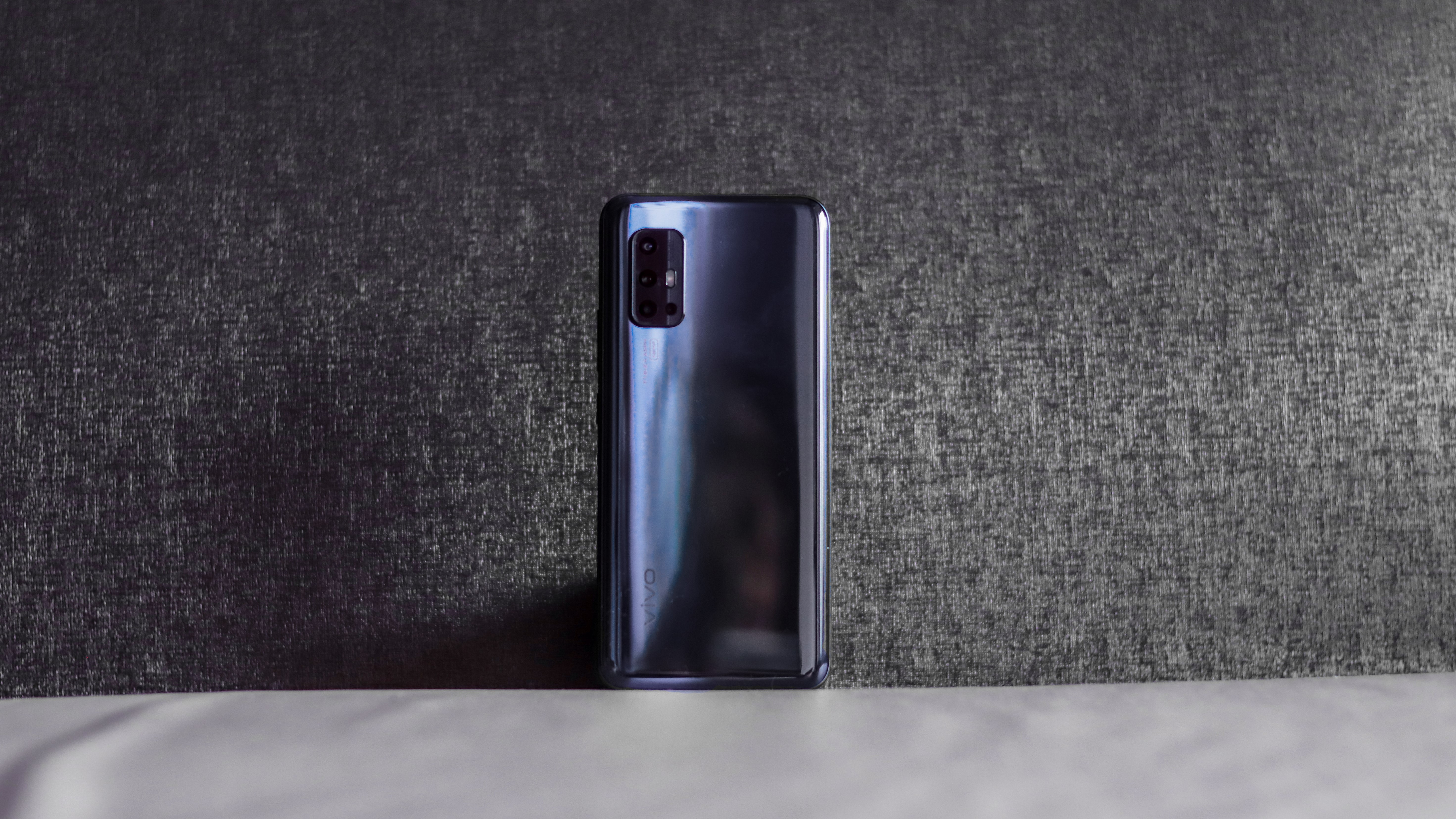TechRadar Verdict
The Vivo V17 brings a next-gen design to last-gen internals. While there's nothing wrong with that, at a price of Rs 21,990, it is vying for a piece of one of the most difficult segments where specs dominate the race. For a consumer with those preferences, the Vivo V17 is not an easy recommendation.
Pros
- +
Modern display
- +
Great battery life
- +
Trendy back design
- +
Quad-camera setup
Cons
- -
Specs not competitive
- -
Interface needs work
- -
Inconsistent camera
Why you can trust TechRadar
The budget smartphone segment of India is on fire, yielding great options for consumers at a crazy pace. This race has made the sub Rs 20,000 segment a thrill ride to witness, with each season bringing more features from the premium to the one below it. By this, every smartphone manufacturer following this trend has seen tremendous success while the rest have had their share usurped. For the better part of 2019, the game has been in the hands of Xiaomi and Realme, exchanging blows for each little price increment.
At the same time, the above Rs 20,000 segment seems to have slowed down in its pace of innovation, letting more of its potential customers get wooed by the incredible value offerings in the budget segment. While the budget champions have begun shipping flagship chipsets in this segment, OEMs such as Vivo have resorted to innovations in the camera and design departments for its premium mid-rangers,
The Vivo V17 is the latest addition to this lineup. The name may suggest a lower-specced sibling of the Vivo V17 Pro; in reality, the internal specs are the only common point between the two. It still manages to bring in a few aspects before any other manufacturer in the country and hopes to ride on their appeal to sell it.
Price and availability in India
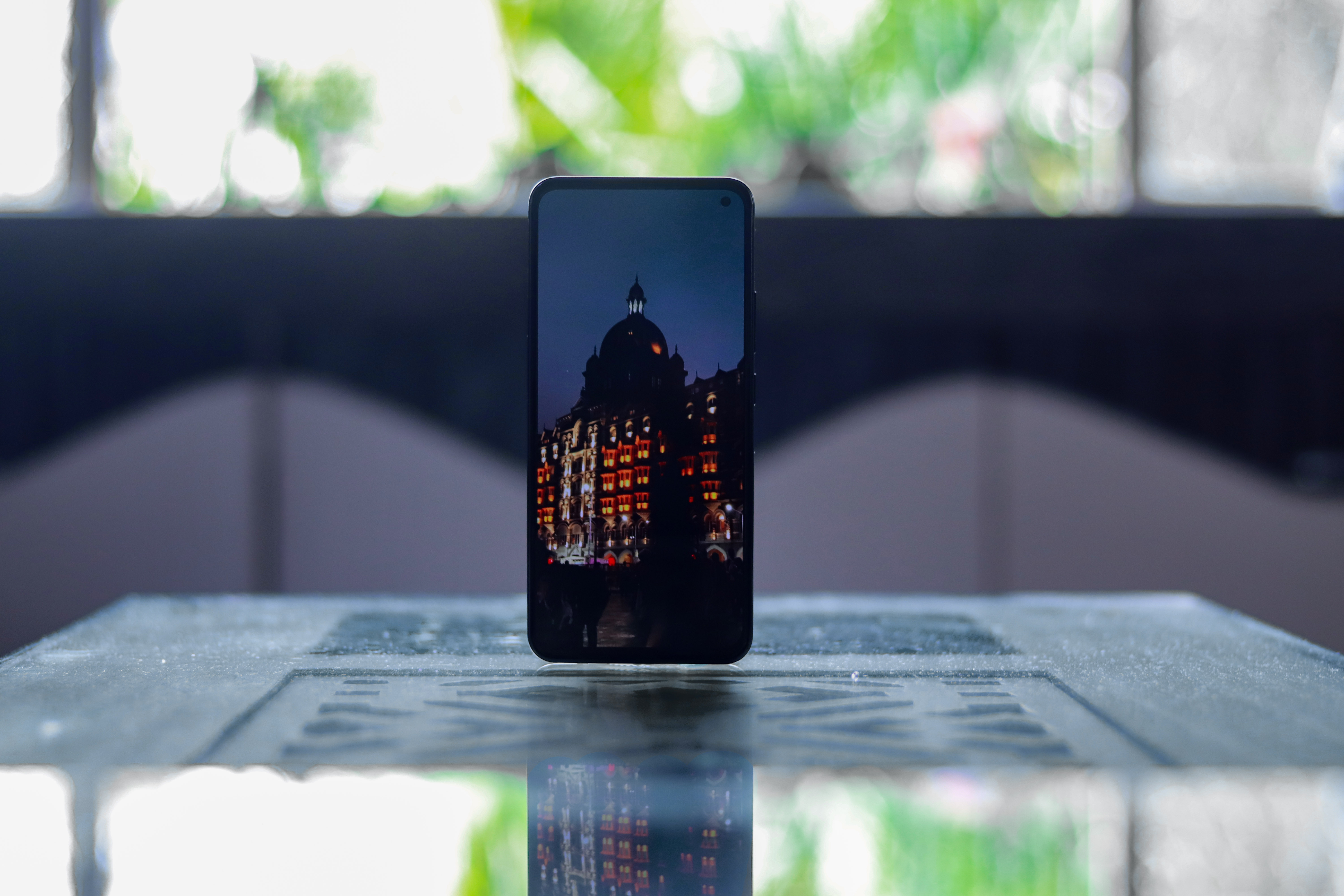
In India, the Vivo V17 comes in a single configuration, with 8GB of RAM and 128GB of storage. Available in colours such as Midnight Ocean and Glacier Ice, it is priced at Rs 22,990 and is available at all major online as well as offline retailers.
Design
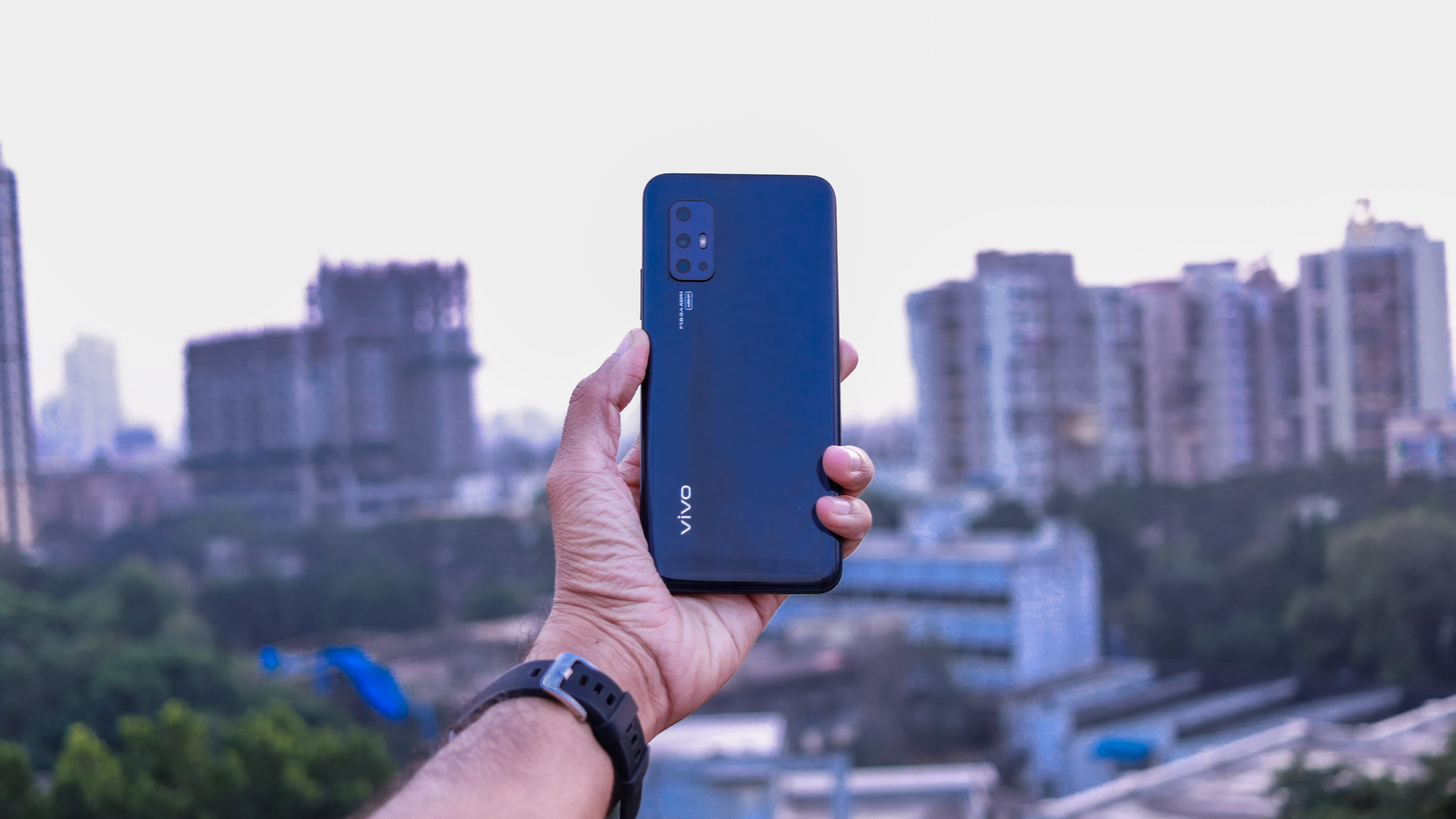
Smartphone designs have become somewhat indistinguishable across segments. For most of 2019, we saw multiple cameras on the back, big, notched displays, and a move to glass or wannabe glass materials for the rear in gradient finishes. Undeniably, Vivo had quite a few smartphones that would fall under the definition; the Vivo V17 aims to set itself apart from the current crowd, with a design that is likely to be a common sight in 2020.
Starting with the back, we have all the cameras confined into a rectangular Island, with the sensors arranged in a 2x3 configuration. It might not seem particularly eye-catching but is sure to be a regular design choice in the coming months. If the current crop of leaks is anything to go by, Samsung and Huawei are going to implement a similar camera arrangement for their flagships and mid-rangers. It adds a subtle touch that this phone is meant for photography.
We're not going to comment on who brought this camera design to its smartphones first, but the front is where Vivo takes a resounding lead. The NEX series is known to bring innovative approaches to getting rid of the notch and hiding the selfie cameras. The Vivo V17 takes that learning to ship a display that goes almost notch-less. The only obtrusion is the selfie camera, which resides in the smallest punch-hole ever seen on a smartphone. If there's one product whose marketing message of "you'll get used to it" for the notch you should take seriously, it's this one.
Sign up for breaking news, reviews, opinion, top tech deals, and more.
The seemingly futuristic design is clad in a polycarbonate shell that is a smudge magnet. The slightest bit of grime amplifies quickly, especially on this black variant that we had. On the plus side, that stickiness makes this phone less slippery when wielded.
Display
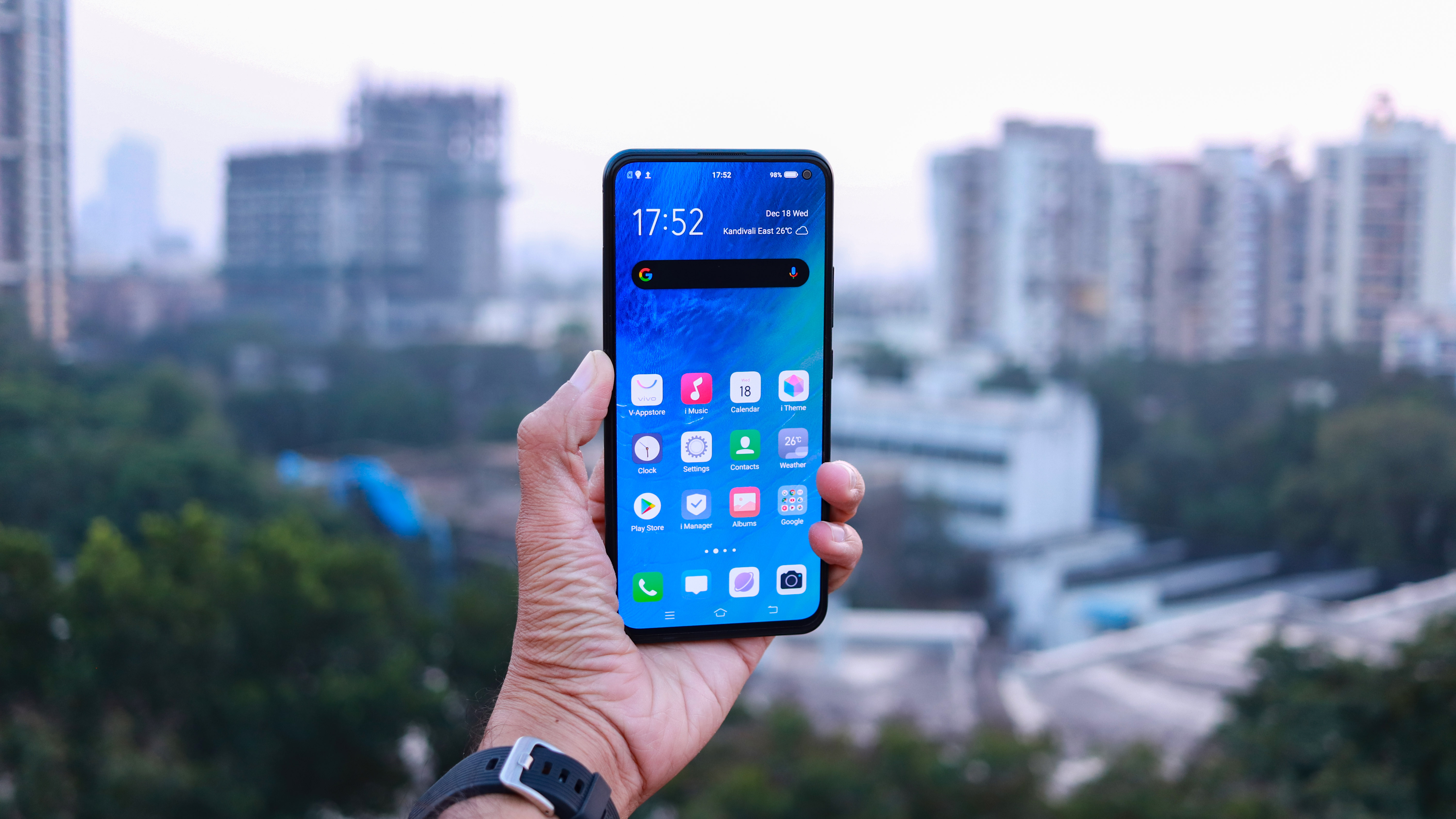
Irrespective of whether you find notches on smartphones intriguing or ‘inspired,’ it’s an agreeable fact that a phone with no notch is better than one with. On the same lines, a phone with a smaller notch is a much more appreciated design accomplishment. The Vivo V17 currently takes the crown for the phone with the smallest punch-hole notch. Supposed to be less than 3mm in diameter, this notch is smaller than most elements in the status bar, and it is straightforward. It's an engineering feat that takes us closer to the in-display cameras of the future.
A 6.44-inch Super AMOLED display occupies the rest of the fascia with a 20:9 aspect ratio and a resolution of 2,400 x 1,080. The tall aspect ratio, combined with the slim bezels make the Vivo V17 a surprisingly compact device to wield. The panel exhibits great true-to-life colors, unlike other smartphones with an AMOLED display. It has just the right amount of saturation not to sizzle your eyes. The black reproduction is absolutely perfect too.
The max brightness is claimed to be around 800 nits, and sunlight legibility is pretty good too. On the other end of the spectrum, the minimum brightness is adequate for using at night. The display is covered by Schott Xensation glass for protection and comes with a screen protector pre-applied. There's also an in-display fingerprint scanner that works well but is far from the fastest.
Performance and Gaming
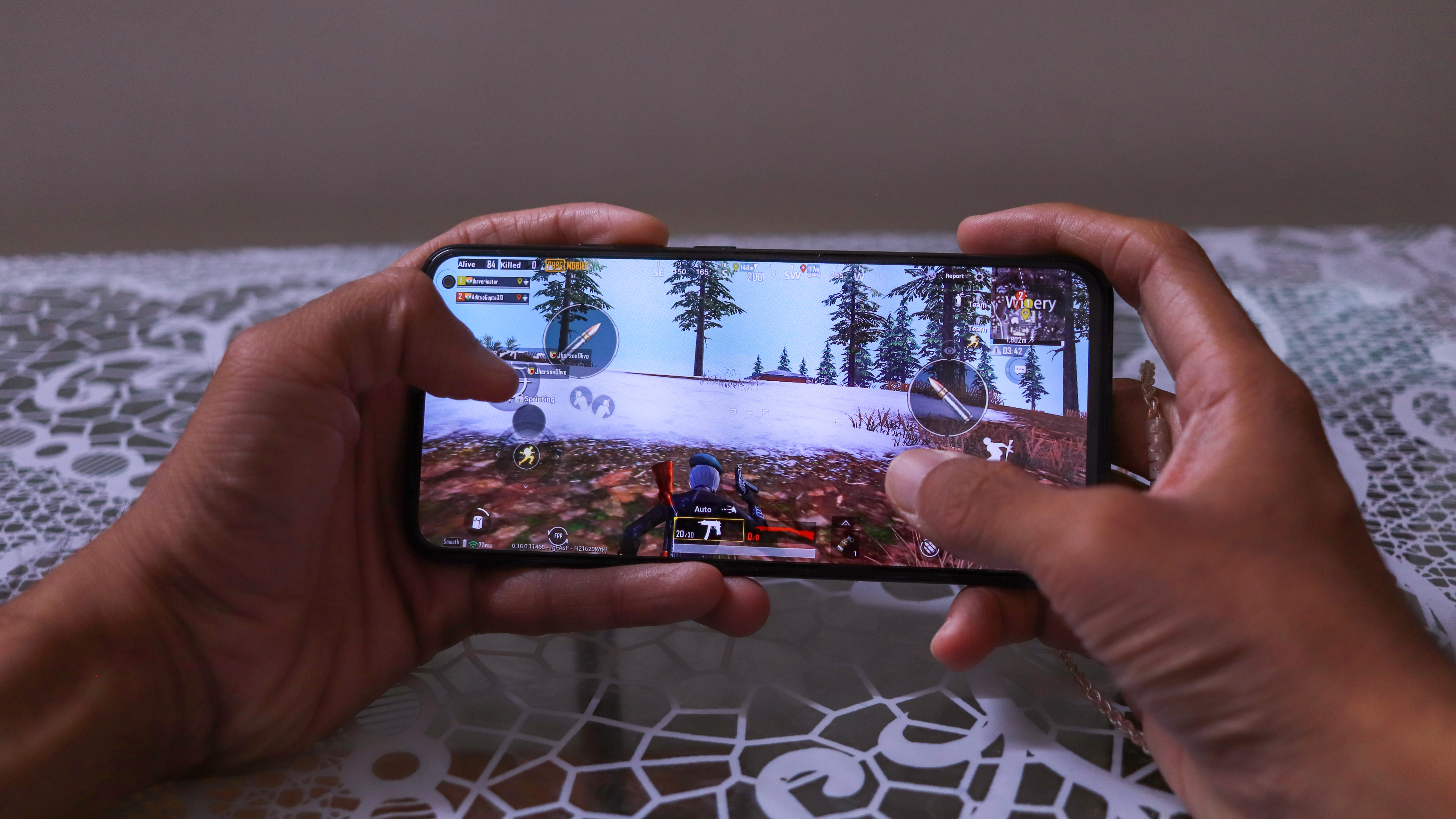
Here’s where the Vivo V17 gets off futuristic train and gets down in 2018. Powered by the Snapdragon 675 chipset, this is the same silicon that powers the Vivo V15 series from 10 months ago, and the Vivo U20, which starts at Rs 10,990. The internals could’ve been fine in other markets. Still, in the extremely competitive budget smartphone segment of India, where users are known to judge a smartphone based on the processor powering it, the odds are against it.
For reference, the Snapdragon 675 is an octa-core chipset built on the 7nm manufacturing process with two high-performance cores and six efficient cores. The Adreno 618 GPU takes care of the graphics. On the Vivo V17, it is paired with 8GB of RAM and 128GB of UFS 2.1 storage.
Like most current chipsets, it performs reasonably well for your basic slew of tasks such as texting, browsing, content consumption, and light multitasking. The interface seems responsive, and the memory management was excellent too. Moderately heavy tasks will not be an issue.
The only visible area where it seems that the chipset is struggling to keep up is during heavy gaming. PUBG Mobile, for example, sees frequent frame drops, even on the lowest settings. It’s not bad enough to hamper gameplay but was perceivable. Way better than the Vivo Z1x’s gaming experience, though, which struggled even with a better processor. We guess that’s due to improved optimizations and Vivo’s familiarity with the Snapdragon 675 SoC. Heating was also common during gaming sessions.
The non-obtrusive punch-hole display also makes the viewing experience seamless, and the taller screen brings more horizontal real estate during gaming.

Aakash is the engine that keeps TechRadar India running, using his experience and ideas to help consumers get to the right products via reviews, buying guides and explainers. Apart from phones, computers and cameras, he is obsessed with electric vehicles.
